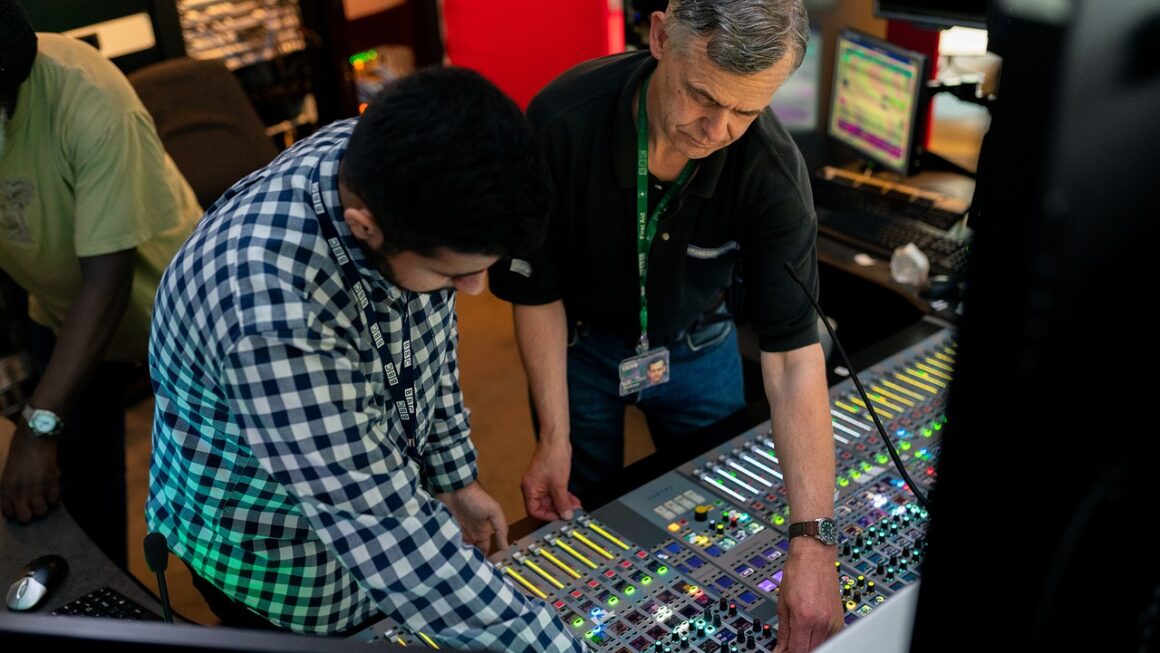The world of photography can be captivating, and for many, the journey begins with a smartphone. But as your passion grows, you might find yourself craving more control, better image quality, and a system that can adapt to your evolving creative vision. This is where the Digital Single-Lens Reflex camera, or DSLR, enters the picture. Let’s delve into what makes DSLRs such a popular and powerful choice for photographers of all levels.
What is a DSLR Camera?
A DSLR camera uses a mirror and prism system to allow you to see exactly what the lens sees. When you press the shutter button, the mirror flips up, allowing light to reach the sensor and capture the image. This optical viewfinder is a major advantage over cameras with electronic viewfinders or LCD screens, offering a true, lag-free view of your subject.
Key Components of a DSLR
- Lens: The lens focuses light onto the sensor. DSLRs have interchangeable lenses, allowing you to adapt to different shooting situations, from wide landscapes to close-up portraits.
- Mirror: This reflects the light coming through the lens up to the viewfinder, giving you a direct view of the scene.
- Prism: The prism corrects the image orientation so that you see the scene right-side up.
- Sensor: The sensor captures the light and converts it into a digital image. Sensor size is crucial for image quality, dynamic range, and low-light performance. Common sensor sizes are APS-C and Full Frame.
- Shutter: This controls the amount of time the sensor is exposed to light. Shutter speed is a critical setting for controlling motion blur and overall exposure.
- Image Processor: This processes the raw data from the sensor to create the final image.
How DSLRs Work
The key to understanding a DSLR is the mirror system. When you look through the viewfinder:
When you take a photo:
Advantages of Using a DSLR
DSLRs offer several advantages over other types of cameras, especially smartphones and point-and-shoots. These benefits are often cited by enthusiasts and professionals alike as reasons to choose a DSLR.
Superior Image Quality
- Larger Sensors: DSLR sensors are significantly larger than those in smartphones, leading to better low-light performance, wider dynamic range, and shallower depth of field. For example, a full-frame DSLR sensor is roughly 36mm x 24mm, vastly larger than the sensor in most smartphones.
- Higher Resolution: DSLRs typically offer higher megapixel counts, resulting in more detailed images that can be cropped and enlarged without significant loss of quality.
- Better Dynamic Range: DSLRs can capture a wider range of tones, from the brightest highlights to the darkest shadows, resulting in more realistic and detailed images.
Greater Control and Customization
- Manual Mode: DSLRs offer full manual control over aperture, shutter speed, and ISO, allowing you to fine-tune your settings for any shooting situation.
- Interchangeable Lenses: The ability to swap lenses is a huge advantage, allowing you to adapt to different subjects and shooting styles. Wide-angle lenses for landscapes, telephoto lenses for wildlife, and macro lenses for close-ups are just a few examples.
- Customizable Settings: DSLRs allow you to customize almost every aspect of the camera’s operation, from white balance to autofocus modes.
Optical Viewfinder Experience
- Real-Time View: The optical viewfinder provides a direct, lag-free view of the scene, making it easier to compose shots and track moving subjects.
- No Battery Drain: Unlike electronic viewfinders, the optical viewfinder doesn’t use battery power, extending shooting time.
- Better Visibility in Bright Light: Optical viewfinders are easier to see in bright sunlight than LCD screens.
Key Features to Consider When Buying a DSLR
Choosing the right DSLR can be overwhelming, given the array of models and features available. Focusing on these key aspects will help you narrow your choices.
Sensor Size and Resolution
- APS-C vs. Full Frame: Full-frame sensors offer superior image quality and low-light performance, but they also come at a higher price point. APS-C sensors are more affordable and still offer excellent image quality for most users.
- Megapixel Count: While megapixels are important, they are not the only factor determining image quality. A camera with a larger sensor and fewer megapixels can often produce better images than a camera with a smaller sensor and more megapixels. Consider your intended use: High megapixel counts are necessary if you intend to make large prints or heavily crop your images.
Autofocus System
- Number of Focus Points: More focus points provide greater flexibility in selecting the area of focus. Modern DSLRs have dozens or even hundreds of focus points.
- Focus Modes: Look for a camera with a variety of focus modes, such as single-point autofocus (AF-S), continuous autofocus (AF-C), and auto-area autofocus.
- Low-Light Autofocus: A camera that can focus quickly and accurately in low light is essential for shooting in challenging conditions.
ISO Performance
- Native ISO Range: The native ISO range is the range of ISO settings that the camera can use without any artificial boosting or reduction. A wider native ISO range generally indicates better low-light performance.
- Usable ISO Range: The usable ISO range is the range of ISO settings that produce acceptable image quality. This will vary depending on the camera and your personal preferences.
Video Capabilities
- Resolution and Frame Rate: Many DSLRs can record video at 4K resolution and frame rates up to 60fps. Consider your needs and budget.
- External Microphone Input: If you plan to record a lot of video, an external microphone input is essential for capturing high-quality audio.
- Manual Video Controls: Having manual control over aperture, shutter speed, and ISO in video mode is crucial for achieving the desired look and feel.
Top DSLR Brands and Models
The DSLR market is dominated by a few key players, each with its own strengths and weaknesses. Consider the following brands and models as starting points for your research.
Canon
- Canon EOS Rebel Series (e.g., Canon EOS Rebel T8i): An excellent entry-level option, providing a great balance of features and price. Great for beginners and hobbyists.
- Canon EOS 90D: A powerful mid-range DSLR with a high-resolution sensor and advanced autofocus system.
- Canon EOS 5D Mark IV: A professional-grade full-frame DSLR known for its exceptional image quality and robust build.
Nikon
- Nikon D3500: Another excellent entry-level DSLR, offering great value for money.
- Nikon D7500: A mid-range DSLR with a fast autofocus system and excellent low-light performance.
- Nikon D850: A high-resolution full-frame DSLR known for its exceptional detail and dynamic range.
Pentax
- Pentax K-70: A rugged and weather-sealed DSLR with excellent image quality and a unique in-body image stabilization system.
- Pentax K-1 Mark II: A full-frame DSLR with a retro design and advanced features.
When choosing a brand and model, consider factors such as lens availability, ergonomics, and your budget. Visit a local camera store to try out different models and see which one feels best in your hands.
Tips for Getting Started with Your DSLR
Once you’ve purchased your DSLR, here are a few tips to help you get started:
Learn the Exposure Triangle
- Aperture: Controls the depth of field and the amount of light entering the lens.
- Shutter Speed: Controls the amount of time the sensor is exposed to light.
- ISO: Controls the sensitivity of the sensor to light.
Mastering the relationship between these three settings is crucial for achieving the desired exposure and creative effects.
Shoot in RAW Format
- RAW files contain all of the data captured by the sensor, allowing you to make more adjustments in post-processing without sacrificing image quality.
- JPEG files are compressed and contain less information, limiting your ability to edit them.
Practice Regularly
- The more you practice, the better you will become at understanding your camera and capturing the images you envision.
- Experiment with different settings, compositions, and subjects.
- Don’t be afraid to make mistakes – that’s how you learn!
Learn Post-Processing
- Post-processing is an essential part of the digital photography workflow.
- Learn how to use software such as Adobe Lightroom or Capture One to adjust exposure, white balance, contrast, and other settings.
Conclusion
DSLR cameras offer a powerful and versatile platform for exploring the art of photography. While smartphones have come a long way, DSLRs still provide superior image quality, greater control, and a more immersive shooting experience. Whether you’re a beginner or an experienced photographer, investing in a DSLR can unlock new levels of creativity and help you capture stunning images. Take the time to research your options, understand the key features, and practice regularly to master your craft. The world of photography awaits!




